End-of-session update: partisanship goes up
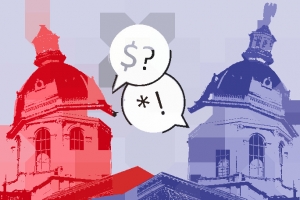
Halfway through the 2019 legislative session, Citizens Count looked at one measure of partisanship, "party unity." We found that the New Hampshire House of Representatives seems to be getting more partisan, but the New Hampshire Senate is not.
Read our first analysis of "party unity" in the New Hampshire House and Senate
Now that the budget standoff and veto override votes are over, it’s time to update those numbers. Unfortunately, it looks like party divisions are deeper than ever in both the House and Senate.
Partisanship measure reaches twenty-year high in the House of Representatives
When looking at all of the roll call votes from January through September, party unity has reached a twenty-year high in the House of Representatives: 90%.
Party unity, a measure from Congressional Quarterly, is the percentage of roll call votes in each legislative session in which a majority of one party opposed a majority of the other party.
In simpler terms, during the 2019 House session 9 out of 10 times representatives drew a sharp line in the sand based on party, with few legislators crossing party lines.
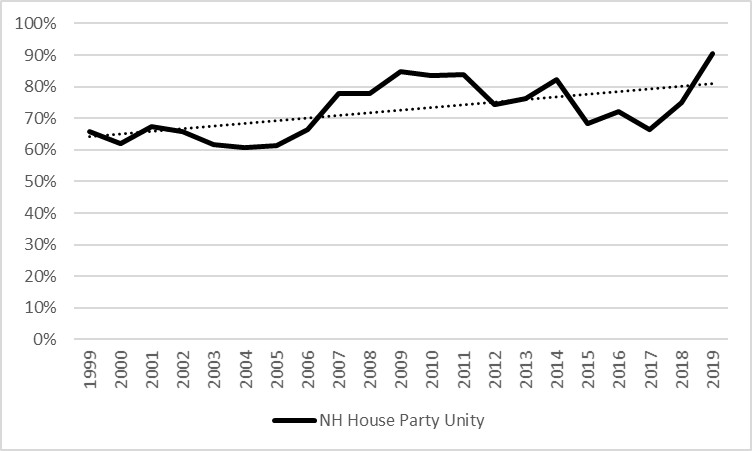
Partisanship measure also peaks in the Senate
From January through September 2019, party unity was 76% in the Senate. When we first calculated party unity in April 2019, Senate party unity was only 65%. That suggests votes got a lot more contentious in the Senate this spring.
The last time Senate party unity was close to that high was in 2011, at 73%.
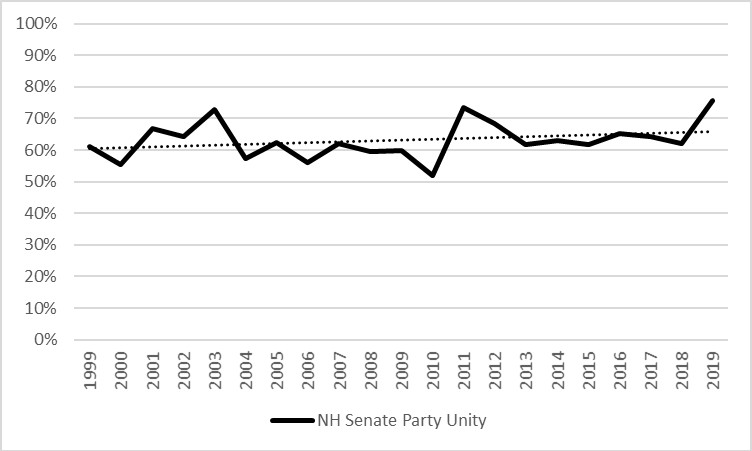
A note about roll call votes
Party unity is based on just one type of voting: roll call votes. In a roll call vote, each legislator’s vote "yea" or "nay" is recorded with their name.
There are also "division votes," where the votes are recorded without names, and "voice votes," where legislators in a group say "yea" or "nay" and the loudest side wins.
Generally speaking, less controversial bills with bipartisan agreement don’t get roll call votes. In fact, less than one quarter of bills voted on in the House and Senate get a roll call vote. Because the party unity measure only includes roll call votes, it does not capture how many bills pass with bipartisan agreement, particularly through voice votes.
However, data shows that over time a larger share of bills in both the House and Senate are getting roll call votes.
On average from 1999 through 2018, in each two-year legislative session 14% of bills voted on in the House had a roll call vote. In 2019, 23% of bills voted on in the House had a roll call vote.
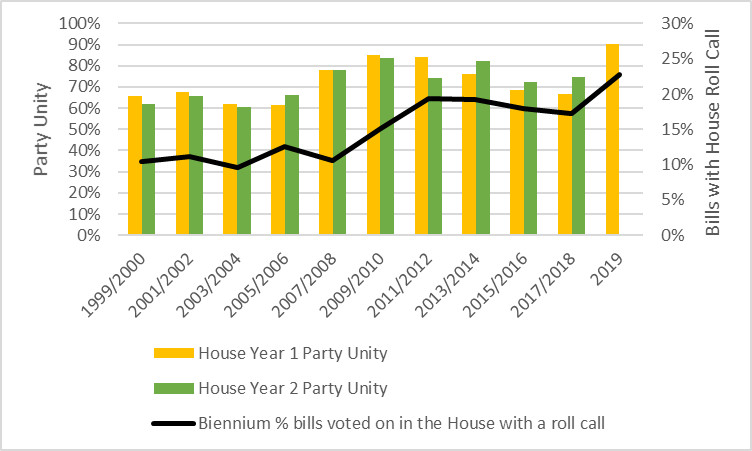
On average from 1999 through 2018, in each two-year legislative session 16% of bills voted on in the Senate had a roll call vote. In 2019, 23% of bills voted on in the Senate had a roll call vote.
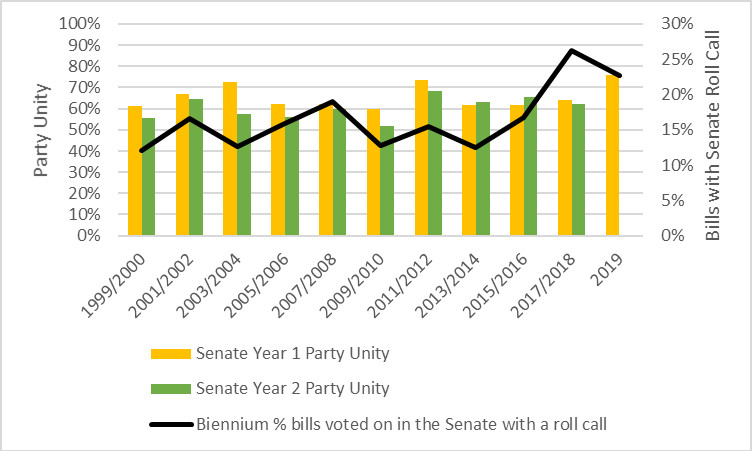
The growing share of bills with roll call votes suggests that that voting is getting more contentious in both the House and Senate. This echoes the results of the party unity measure.
But is party unity bad?
As we noted in our first analysis of partisanship, party unity isn’t necessarily a bad thing. It gives voters a clear choice based on party and helps parties achieve their goals. Read our first analysis of party unity to learn more.
Wondering what else might impact party unity and partisanship? Read our second analysis of party unity.
Want to know your legislators’ individual party unity scores? Find your elected officials' individual profiles and scroll down to see "Partisanship."











Comments
Login or register to post comments